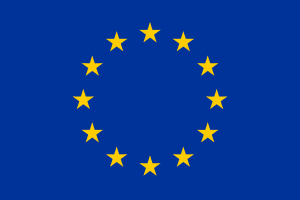Computational Spectroscopy In Natural Sciences and Engineering: Difference between revisions
m reference to CELEX-number via template:CELEX |
→External links: Categories |
||
| Line 104: | Line 104: | ||
* [https://cordis.europa.eu/project/rcn/211586_en.html CORDIS Community REsearch and Development Information Service] |
* [https://cordis.europa.eu/project/rcn/211586_en.html CORDIS Community REsearch and Development Information Service] |
||
[[Category:College and university associations and consortia in Europe]] |
|||
[[Category:Computational chemistry]] |
[[Category:Computational chemistry]] |
||
[[Category:Engineering university associations and consortia]] |
|||
Revision as of 17:28, 28 August 2023
COmputational Spectroscopy In Natural Sciences and Engineering (COSINE) is a Marie Skłodowska-Curie Innovative Training Network.[1] in the field of theoretical and computational chemistry,[2] focused on Computational Spectroscopy.[3] The developing of theoretical tools is the main goal of the projects: computational codes based on electronic structure theory for the investigation of organic photochemistry and for simulation of spectroscopic experiments. It is part of the framework programme funding research Horizon 2020.[4]
Objective
Main purpose of the COSINE ETN is the development of ab-initio research tools to study optical properties and excited electronic states, which are dominated by electron correlation. This tools are developed for the investigation of organic photochemistry with the aim of accurate simulation of spectroscopic experiments on the computer. To this end a complementary series of tools, rooted in Coupled cluster,[5] algebraic diagrammatic construction, Density Functional Theory, as well as selected multi-reference methods, are developed.
Nodes
The project is divided into 8 different nodes:
- Node 1, University of Heidelberg (UHEI) is the coordinating node, led by Andreas Dreuw;
- Node 2, KTH Royal Institute of Technology (KTH) in Stockholm, led by Patrick Norman;
- Node 3, Ludwig Maximilian University of Munich (LMU),[6] led by Christian Ochsenfeld;
- Node 4, Scuola Normale Superiore (SNS) in Pisa,[7] led by Chiara Cappelli;
- Node 5, University of Southern Denmark (SDU) in Odense, led by Jacob Kongsted;
- Node 6, L'École Nationale Supérieure de Chimie de Paris (ENSCP), led by Ilaria Ciofini:
- Node 7, Norwegian University of Science and Technology (NTNU) in Trondheim,[8] led by Henrik Koch;
- Node 8, Technical University of Denmark (DTU) in Lyngby,[9] led by Sonia Coriani.
 This project has received funding from the European Union’s Horizon 2020 research and innovation programme under the Marie Skłodowska-Curie grant agreement N° 765739 |
Partner organisations
- ELETTRA, Sincotrone Trieste, Italy;
- Electromagnetic Geoservices ASA, Norway;
- EXACT LAB SRL, Italy;
- NVIDIA GmbH, Germany;
- DELL S.P.A., Italy;
- Inc., United States;
- PDC Center for High-Performance Computing, KTH, Sweden;
- Dipartimento di Scienze Chimiche e Farmaceutiche, Università degli Studi di Trieste, Italy.
References
- ^ "Training network for COmputational Spectroscopy in Natural sciences and Engineering | Projects | H2020".
- ^ Jensen, Frank (2017), Introduction to computation chemistry, John wiley & sons
- ^ Norman P, Ruud K, Saue T (2018), Principles and Practices of Molecular Properties: Theory, Modeling, and Simulations, John Wiley & Sons
- ^ 2013/743/EU: Council Decision of 3 December 2013 establishing the specific programme implementing Horizon 2020 - the Framework Programme for Research and Innovation (2014-2020) and repealing Decisions 2006/971/EC, 2006/972/EC, 2006/973/EC, 2006/974/EC and 2006/975/EC
- ^ Helgaker T, Jorgensen P (2014), Molecular electronic-structure, John Wiley & Sons
- ^ "Marie Skłodowska-Curie Innovative Training Networks - LMU Munich".
- ^ 09/05/2017, 8634, 256/2017, III/8.19 https://www.sns.it/sites/default/files/documenti/02-08-2017/decreti_del_direttore_accordi_e_convenzioni_i_semestre_2017.pdf
- ^ "EU projects".
- ^ "Computational Spectroscopy in Natural sciences and Engineering (COSINE): Coupled cluster methods for linear X-ray spectroscopies, photoionisation, pho todetachment and photoelectron spectroscopy - DTU Orbit".
- ^ "About - ITN-COSINE".

